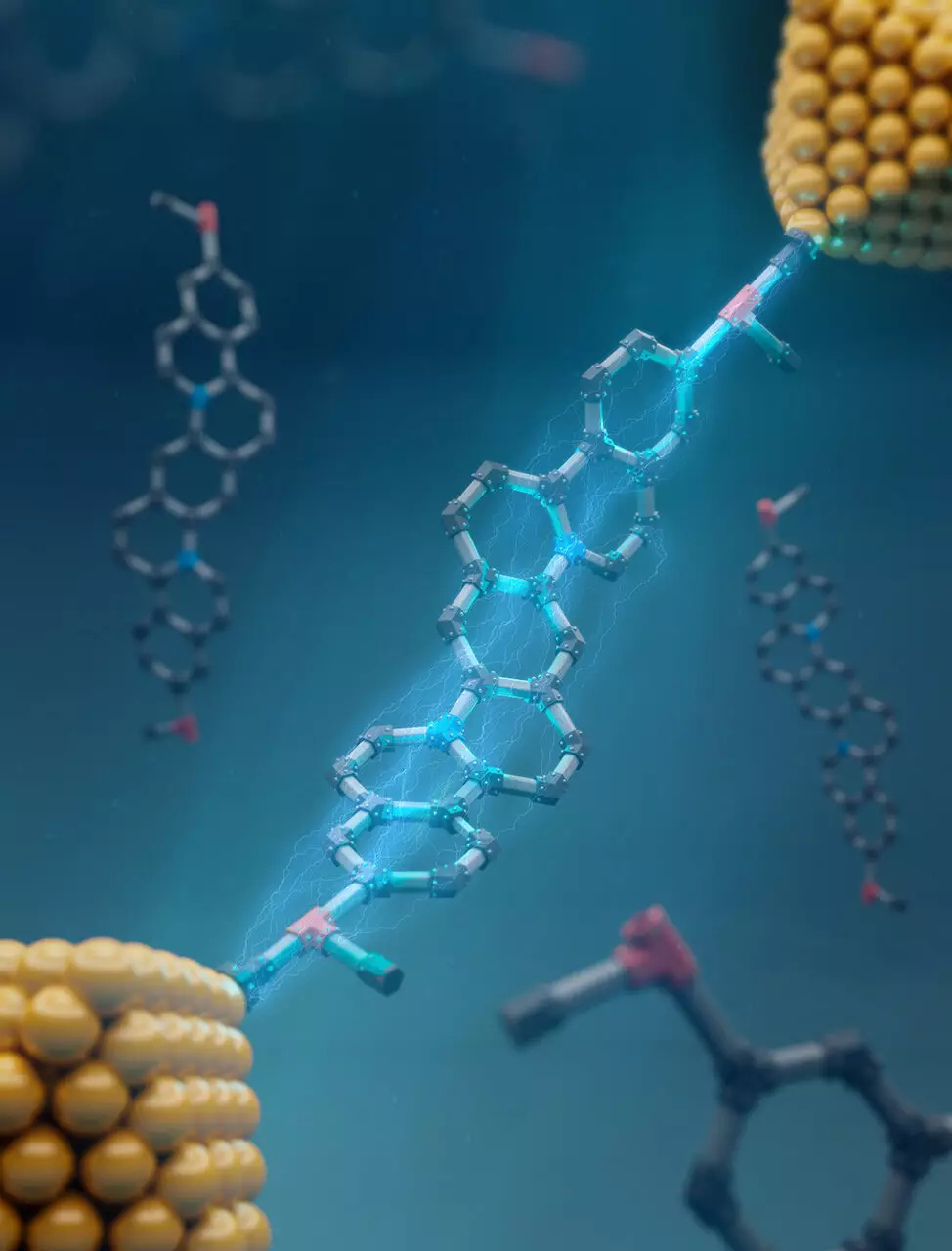As the demand for smaller, more efficient electronic devices escalates, researchers are confronted with challenges stemming from the physical limitations inherent to traditional silicon-based technologies. With transistors becoming miniaturized, the exponential growth predicted by Moore’s Law—the observation that the number of transistors on a microchip doubles approximately every two years—faces a potential stagnation. To surmount these barriers, the field of molecular electronics emerges as a promising alternative, utilizing single molecules to create electronic components.
Understanding Molecular Electronics
Molecular electronics focuses on the application of molecular-scale components to develop electronic devices. Unlike their bulkier counterparts, molecules possess unique properties that can facilitate the creation of components with unprecedented miniaturization. However, a key challenge is managing electrical current through these singular molecules. The inherent dynamism of molecular structures can lead to unpredictable conductance, complicating their integration into reliable devices.
Research from the University of Illinois Urbana-Champaign has made significant strides in tackling these issues. Led by Charles Schroeder and supported by adept graduate and postdoctoral researchers, the team introduced innovative techniques to stabilize molecular conductance. By employing these advancements, they proposed that shape-persistent molecules—particularly ladder-type structures—could maintain a consistent electrical performance.
In organic chemistry, the flexibility of many molecules can lead to various conformations, each possessing distinct electrical conductance properties. This variability presents formidable challenges when designing molecular components intended for widespread application. In a groundbreaking revelation, Schroeder emphasized the critical influence of molecular flexibility on electronic functionality. To address this variability, the research team proposed the concept of rigid backbone structures, which effectively limit the extent of a molecule’s conformational changes.
The ladder-type molecules serve as pivotal examples in this research, featuring a sequence of interconnected rings that restrict their conformational flexibility. By minimizing the movements within these molecules, the researchers can ensure a more uniform conductance across multiple junctions. Such consistency is essential for scaling the production of electronic components that need to exhibit identical functional characteristics—an obstacle that has previously thwarted the commercialization of molecular electronic devices.
A major innovation introduced by the researchers is a “one-pot” synthesis method designed for these shape-persistent ladder molecules. Traditional synthesis techniques often require complex multistep processes, creating a bottleneck in scalability and diversity of molecular products. In contrast, the one-pot method simplifies the reaction process, allowing for the production of a more extensive array of chemically diverse molecules with paths that are significantly less costly.
This modular synthesis strategy opens the door for utilizing readily available starting materials, thereby enhancing the reactivity and variety of compounds that can be synthesized. This accessibility is crucial for propelling molecular electronics into the mainstream market. The implications extend beyond ladder-type structures; the research team successfully demonstrated the broader applicability of their strategies by synthesizing a butterfly-like molecule, further validating their approach.
The implications of these advancements in molecular electronics are profound. The research team’s work does not merely present incremental improvements; it lays the foundation for entirely new classes of functional materials. By constructing molecules that possess both stability and functionality, the groundwork is established for the development of more compact and efficient electronic devices.
The ability to synthesize molecules with predictable conductance characteristics could significantly affect multiple industries, from wearables to medical devices, where space and efficiency are paramount. In future applications, billions of such reliably conductive components can be woven into the fabric of next-generation electronics, ensuring compatibility and performance on an unprecedented scale.
While the move towards molecular electronics represents a transformative chapter in technology, it also emphasizes the collaborative nature of scientific innovation. The work being done at the University of Illinois Urbana-Champaign showcases the potential for interdisciplinary teams to overcome longstanding challenges in electronic device manufacturing, heralding a new era of molecular-scale electronics that may very well change the dynamics of how we engage with technology in the years to come.


Leave a Reply